Aurora's Talking Heads 2021 - Agency Heads
Published in Nov-Dec 2021
Aurora polled Pakistan’s leading agency heads on the impact on Pakistan’s communications industry of the current squeeze on marketing budgets, the increasing role of client procurement departments in dictating how these budgets are spent, and the reality that the creative space is no longer the preserve of the traditional creative agency.
Here are the three questions we put to them.
1 Is it tenable to expect agencies to continue to deliver optimal services when marketing budgets continue to be squeezed and the client procurement departments are increasingly calling the shots Yes/No? Please explain why.
2 Given the circumstances, what concrete measures is your agency taking to deal with this situation?
3 As an advertising services provider, do you consider the encroachment into the creative space by non-traditional creative agencies to be a positive development? Yes/No? And why?
Hassan Abbas

CEO, Golden Circle Advertising
1 Agencies need to focus on ROI instead of budgets. Viral campaigns have been built around simple low budget ideas. Agencies that keep focusing on big budgets will lose out.
2 We focus on maximising the ROI instead of budgets. We have developed a more efficient work process and constantly explore low-cost avenues to increase the client’s ROI.
3 Non-traditional agencies’ selling point is their cost rather than their creative work. Sooner or later, clients will realise that brands need more than just Facebook likes. They need strategy, insight, creative and effective media utilisation to succeed.
Numan Nabi Ahmed
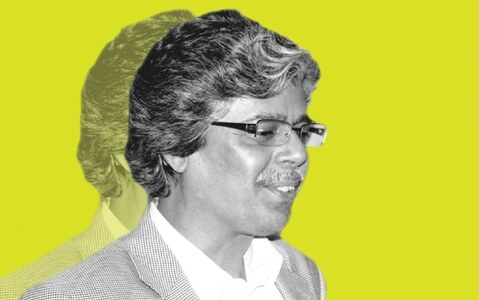
CEO, The Brand Partnership
1 Marketing budgets are not squeezed, but the increased media discounts and lower CPRP have benefitted clients who may not be increasing their ad spend and hence an incremental budget allocation (which was a routine practice in the past) is no longer required by many of them and this gives the impression that budgets are squeezed. Coming to the second part of the question, some of the models are not harming agency revenues (I can explain this, but will avoid doing so, due to space limitations). However, the influence of procurement in the process of agency selection is detrimental to the process; while comparison of costs is important, there are times when RFP is not in line with industry practices and often demands commitments or replies which are not needed from a creative agency. Creative agency selection is marketing’s domain and they should be calling the shots.
2 We are looking at redesigning our business model to adapt to the changing environment. There was no need to do so, but current business practices unfortunately, are putting pressure on us; otherwise we were strong believers in “team of specialists under one roof.”
3 No, because this encroachment is a kneejerk reaction. All stakeholders simply started the cut and paste job of adapting (emulating) international practices without any planning on how to adapt to these or efficiently manage them for higher ROI. Hence, it has created many problems.
Shahnoor Ahmed

Chairman & CEO, Spectrum VMLY&R
1 The client’s SOW (statement of work)and budget are key in deciding how far an agency will go to deliver. If the SOW is clear, then the strategy of a good agency will be to deliver brilliant work even on a shoestring budget set by client procurement. A good agency will never forego an opportunity to go the extra mile.
2 We will continue to follow SOPS, which are: Evaluate SOW. Negotiate with procurement to bag assignments at the best cost possible. Engage the right kind of resources from within. Crack the brief. Get it right the first time.
3 There will always be hot shops that pop up as clients keep looking for cheaper options for short-term/specific projects. This solution may work in the short-term but to build a brand or to be a brand custodian, an agency must be engaged on a long-term basis.
Syed Zaheeruddin Ahmed

Film Director & COO, ID Creations
1 The change in the agency model is inevitable. They either need to come up with a fresh approach or die out. Squeezed budgets will not be sufficient to run a commodity designed for a lavish income model.
2 Our agency runs on very different lines. Our focus is on strong creatives and understanding the concept of branding. We do not find our clients; our clients find us.
3 After Covid-19, new means of communications have come to the fore, changing the approach to marketing. Look at the countless influencers coming up with creative content that produces remarkable engagement. It is not about the number of people; it is simply that a creative mind that can operate from any place. It is the only way for our industry to flourish in the creative dimension, which is the prime objective of our existence in the market.
Naveed Asghar

CEO, GroupM Pakistan
1 It cannot be a sustainable/winning solution. Squeezed agency revenues lead to substandard resources; lesser/insignificant investments in talent development leading to suboptimal offerings and often resorting to unethical practices.
2 Scale plays an integral role in driving value, especially in media. GroupM engages in strategic partnerships to drive value for our clients. However, we also pull out of pitches if we believe our business ethics may be compromised. It is unfortunate that at times it is not a level playing field, although we never compromise on our business practices.
3 A successful creative is a combination of the right insight, the right creative elements/solutions and the right execution. The lines are becoming blurred with multiple mediums and the optimal solution can be created by anyone. The competition in creativity will become stronger and the agencies which provide insightful (creative) solutions that drive real engagement in real-time and in the most competitive way, will be the most successful.
Danish Sohail Aziz

Head of Business Development, Message Communications
1 It is a double-edged sword for agencies to deliver maximum output with diminishing budgets. However, no matter how much the relationship paradigm evolves, it is essential for agencies to keep delivering quality services.
2 The focus has switched to targeted and client-specific marketing; we have revamped our client servicing department and plugged in data-driven strategies to achieve efficient and targeted results.
3 Yes and no. Even if the services are coming from non-traditional sources, any new player means new ideas and inputs which result in innovative and thought-provoking concepts. From an agency’s perspective, competition is always healthy, because it keeps us on our toes. However, compromising on research and data-driven strategies leads to unquantifiable creativity, which is not good for the client; creativity needs to be backed by research and data.
Usman Attique Butt
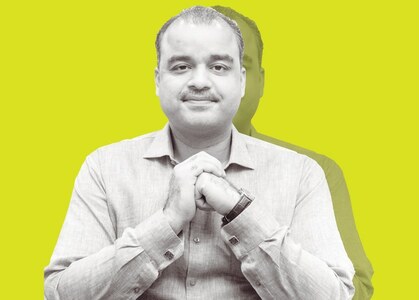
CEO, Interlink Advertising
1 Only if CEOs adapt and reinvest. Clients have learned that much can be done on smaller budgets. Find the ‘right’ client; not the ‘best’ client. Agencies mainly dealing with public sector advertising were hit hard after the implementation of the 2020 New Advertising Policy.
2 Reassessed cash-flows during the pandemic. Promoted the team because “only a happy team can create happy customers.” Implemented flexi hours. Clients are looking for more value at a reduced cost.
3 Anyone can provide services to the market. Steve Jobs said, “It is more fun to be a pirate than to join the navy.”
Aleem Durrani

CEO, Media Pulse
1 The role of agencies remains critical despite diversifying budget allocations. Their expertise lies in their ability to present the most effective strategies for the brand.
2 We deliver exceptional value to our clients through our in-depth knowledge of market segments and advertising expertise in spaces like the rejuvenation of brand image or asserting their presence and position in the market.
3 Healthy competition in any industry is always encouraged. Our focus is on expanding our capabilities to remain relevant, rather than focusing on adverse impacts.
Natasha Durrani

Executive Director, Media Matters Communications
1 Marketing budgets are not being squeezed; they are redirected to digital channels that drive greater engagement with relevant audiences, thus preserving the relevance of media agencies in the value chain.
2 We are strengthening our focus on digital channels to stay relevant in a rapidly diversifying industry.
3 It is always beneficial to identify the positive effects of any development in the industry and that is what we focus on. We prefer to put the emphasis on building our core capabilities in a rapidly evolving ecosystem.
Salman Farooqi

CEO, Bionic Films
1 Agencies require good HR and they need to be kept motivated, which is difficult when budgets are squeezed and client calls the shots.
2 Most agencies maintain a lean structure, working on a project basis rather than monthly retainers. This allows them to hire the required HR for a specific period of time and keep costs under control.
3 Traditional agencies have different departments handling everything which makes them more efficient. They are good for the short-term, but in the long-run, traditional agencies are better for teams.
Nida Haider

MANAGING PARTNER, IAL Saatchi & Saatchi
1 Research tells us that brands that have bounced back most strongly from previous recessions did not cut their marketing spend – and in many cases increased it. They did, however, change what they were spending their marketing budget on to reflect the new context in which they operated. Smart brands are not letting the current crisis impact their marketing budgets.
2 Smart agencies are using this pandemic to learn new ways of communicating to their consumer and basing their messages on the simple insight that people need to be reassured and supported at this time, not sold to. 3 Competition is the enemy of complacency. I think ‘encroachment’ is a pretty harsh word.
Syed Amir Haleem

CEO, Skale Interactive & Kueball Digital
1 Budgets are never a problem; the expectation is. There is nothing wrong with producing an ad for Rs 10 million or one for Rs 500,000. The inexperience of procurement shines through when they give a budget for Rs 500,000 and want to see results that require Rs10 million. However, the marketing end of most clients has a better sense of what to expect based on what they are investing.
2 Production budgets aside, I have never heard of a great brand that has developed strongly over time while being led by multiple agencies, all with their own interpretation of the brand promise. This is why a single creative agency is always the brand custodian. I have worked both as a brand custodian and with brand custodians. Now that I am on the digital side, even if a client asks me to develop a digital campaign, I will ask him to put me through to the creative agency so our thoughts are aligned with the brand’s vision.
3 It is more about a clash of egos than about anything else. A good idea can come from anywhere. Although I don’t like restricting idea generation to the creative agency only, I am a strong advocate of the brand custodianship structures. Guidelines on the brand vision and promise should be developed by a single custodian (creative agency) and campaign ideas based on those guidelines for activation, digital and so on can come from the respective agencies simply because they understand their businesses better.
Faraz Maqsood Hamidi

CE & CD, The D’Hamidi Partnership
1 Procurement is a noose. Unless the value of the creative arts and sciences is given its due measure, the industry will be reduced to a regiment of hacks, operating at the bottom of the barrel. 2 We don’t enter the race to the bottom. Clients that want to make a difference look for like-minded teams who know the art of making a difference. If clients cheapen what you do, find richer clients. 3 Encroachment? The creative spirit has many avatars and multiple streams of specialisation. We should welcome diversity and friction and opposition and all things non-traditional. It leads to a stronger community of creatives and a more robust creative industry.
Fouad Husain

CEO, Omnicom Media Group Pakistan
1 No, because procurement departments are only looking for media cost reductions, whereas optimal services require investments in data and technology to deliver superior results.
2 We are investing in HR, data and technology and encouraging our clients to be more data-savvy as opposed to the more traditional methods of media deployment. 3 Yes. Non-traditional creative agencies have not won mainstream client business. Instead, they have provided services to new accounts and that is a sign of a growing market. Competition pushes everyone to produce their best, and that is something all of us at Omnicom Media believe in.
Ahsen Idris

Group CEO, Blitz Advertising
1 Businesses always expect more than optimal services from their agencies, budget cuts or not. It is a different story for business leaders who understand marketing.
2 Budgets for marketing technology and digital channels are increasing. We have always seen the business through the ‘solution lens’ and work towards building our capacity to provide the right solutions.
3 I believe in media-neutral creative and media-optimised executions. This traditional versus digital creative divide is nonsense. Any creative team well-versed in the process of developing effective advertising solutions, will excel in the business.
Imran Irshad

CEO, M&C Saatchi World Services Pakistan
1 We invest in human capital and talent. Indeed, it does affect agency performance and adds pressure on resourcing, efficiency and output quality. As an agency, we do not compromise on quality, while absorbing the pressure on our bottom line.
2 We have started to encourage our people to become multiskilled. We have introduced an internal programme offering to pay for their certifications. We are also identifying hybrid talent for new hires.
3 It is a positive development. It should encourage fresh thinking, new talent and entrepreneurship. In addition, it will push us to improve and elevate our offerings.
Seema Jaffer
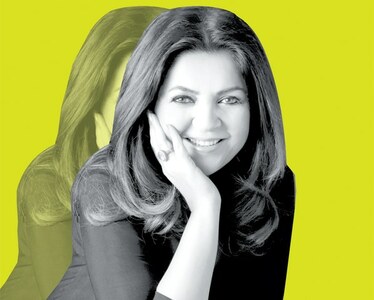
CEO, Bond Advertising & Digital
1 Creative ideas are not the purview of procurement. Clients cannot expect brilliant creatives on shoestring budgets. If low-cost is the key defining factor for determining creative content, then there will be a bigger price to pay. Mediocre money will buy mediocre content and cost the client more in terms of effectiveness and results.
2 Building expertise in key areas. Partnerships with ad-tech. Focusing on data-driven insights. Building inclusive teams that are trend aware and on the pulse.
3 Change is inevitable. We need to accept and embrace it. Agencies need to be leaner and more agile. We need to combine the offering of a full-service agency with the adaptive quality of a nimble creative agency. We need to be tech-driven and ride the trend. Hello, brave new world.
Ahmed Kapadia
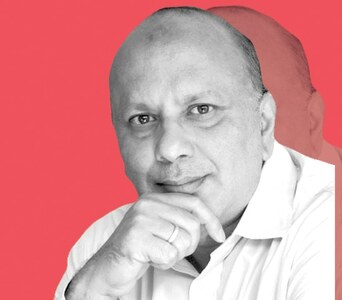
Chairman & CEO, Synergy Group
1 Creative departments are at the heart of the universe of advertising and at the head of socio-economic change; they cannot be replaced with procurement pros, no offence intended. To rescue a confused and falling industry, we have to go for horses for courses first.
2 We appear as a group of companies on the outside, but on the inside we are a synergy of specialised units, creating purposeful communication solutions for a diverse client portfolio. Our sustainability amid changing market trends, the economic environment and the pandemic could be attributed to our bold approach.
3 Look at the pointless brand projections everywhere, thanks to opportunists and the self-acclaimed, who are crossing limits in all the wrong directions. Tomorrow could be too late to set any parameters to track the freebooters; we have to prevent such intrusions from pushing us into chaos.
Umair Kazi

Partner, Ishtehari
1 This is the age of disruption, so no excuses apply. To paraphrase Morpheus, I think the rules can be bent if you are the one. If Wasim Akram can charge an arbitrary amount, so can we.
2 We are trying to be the best in two categories, rather than be generalists. That said, it is easier said than done. Requires massive cojones.
3 The fact that they can encroach so easily, despite this being ‘our’ turf, means that we have been complacent. We have to pivot ad infinitum.
Adeeba Khan

Chief Creative & Strategy Officer, Manhattan Communications
1 No. Holding pitches with 20 agencies and indiscriminately using their ideas, with slight changes here and there and without compensation, is financially ruining the creative agencies.
2 We are becoming selective and working only with clients who understand the value of a professional creative agency.
3 No. Clients who do not work with agencies that have an understanding of what is involved in managing a brand creatively and delivering value in marketing communications lose out by wasting millions in media budgets on fancy executions.
Azam Jalal Khan

CEO, Digitz
1 Yes and No. The simple answer is that input has to match the output. To expect agencies to deliver more without adequate compensation is a recipe for disaster. Marketing budgets that are being squeezed now will correct themselves and there will be a major shift regarding where and how budgets are used.
2 We are focusing on the curve and predicting changes in the ways advertisers reach their customers. Given the explosion in digital media consumption, e-commerce and fast-changing consumer habits, it is imperative to educate ourselves and our clients to maximise their ROAS.
3 Creativity does not belong to one type of person or organisation. Uber creative people, out of high school and college, are repeatedly showcasing this fact across various content platforms. We welcome all kinds of creative developments and believe that in this age of collaboration, it is important to celebrate all types and levels of ideas.
Dara Bashir Khan

CEO Manhattan International & Chairman, Omnicom Media Group Pakistan
1 Our industry, like all others, is going through constant change and challenges. The answer is yes and no. Yes, an agency needs to continue to strive against all the odds and circumstances. No, an agency’s optimal results cannot be driven by a procurement department. A good balance between the two is necessary, but this is not an ideal world and agencies will continue to step up against the odds.
2 “It is not the strongest of the species that survives, nor the most intelligent; it is the one most adaptable to change.” – Charles Darwin. We have adopted Darwin’s view and made ourselves more agile, reflecting the fact that no one style of service or solution fits all. Our teams have been divided according to the client’s profile and requirements.
3 Indifferent. Just like we have entry and mobility in different areas of growth, others do too. It is the nature of the business to expand into areas where we feel the client, along with the agency as their partner, will benefit the most.
Javed Qadeer Khan

Group CEO, Marksman Advertising
1 The ultimate outcome of any budget cut is a compromise on the quality of the outcome. The same is true for agencies that face soaring costs. As far as procurement calling the shots, this leaves little room for creativity.
2 We carry out proper budgeting to help us acquire the correct tools and channels for our clients. We make sure that the procurement department is more of a facilitator in aligning the client’s internal goals with those of the agency.
3 This is a positive development. A wide range of opportunities that help us better connect with the consumer has made advertising more exciting. Innovation is key, why not adapt to the change rather than be left behind?
Raheel Pasha Khan

CEO, Woot
1 No, it is not! Just like the raw material and HR resource inflation faced by other companies, the same thing is happening at the agency end. At the same time, agencies need to get creative about cost management and up-value their offerings.
2 Vertical integration, adopting digital as a way of life and creating new pivots within the business.
3 Yes and no. Yes, because conventional agencies are forced to rethink their offerings and their business model. No, because underneath the virality and salience (largely attributed to shorter attention spans), lies the fundamental truth of brand development, so often ignored in the quest to remain topical at low cost.
Aamir Ali Khwaja

Group COO, Mullen Lowe Rauf Group
1 It is a challenge, and not an ideal one by any means. The procurement department’s mandate is to ensure fair play, transparency and deliver cost efficiencies. Our mandate is to create outstanding creativity. More often than not, the mandates collide and the intangibles we, as creative professionals, deem important: ‘quality’, the best team to meet a particular brief and the overall ‘creative vision’ are often compromised.
2 We have a list of non-negotiables and we try to ensure that our perspective is clearly communicated. If push comes to shove, we ensure complete transparency and make sure that the client is fully aware of what they will be getting.
3 The world has changed. There are, and will be, more players involved. However, what needs to be maintained at all times to ensure the integrity of the client-agency partnership is the thought-leadership process. This must be the realm of the creative agency and its marketing partners… working together to create a vision for the brand. This will ensure better teamwork and prevent relationships from becoming transactional, allowing for ground-breaking creativity.
Sara Koraishy

CEO, JWT | Grey
1 Procurement is the death of creativity. When procurement tries to get X creative solution at the same (or ideally less) cost of Y, they effectively take away all the experience or the USP of the individuals or the company.
2 We create stronger partnerships with the marketing/brand teams. When you fight as one, it is heard clearer and the outcome has almost always been favourable.
3 Having more creative brains can only be good for the industry. It helps to push everyone to think differently, challenge each other and ourselves, ultimately elevating the output.
Muzaffar Manghi

CEO, Manghi Communication Solutions (MCS)
1 Yes, it is. Assuming that agencies are willing to reconsider their value proposition with as much fluidity and speed as the client’s requirements have changed. It is a new market, sell something new.
2 By helping clients develop an in-house competence to do more themselves. This reduces their marketing costs dramatically and allows the agency to bill fairly for the work clients cannot do themselves. Plus, we never end up competing with each other.
3 It’s fantastic for us. Non-traditional set-ups have helped change the narrative around what an agency is and how many people, boardroom chairs, huddle rooms and sprawling square footage is actually needed to get good work and a good price.
Ahmed Jamal Mir

MD, Prestige Communications
1 The budget squeeze is disruptive and challenging the ability of ad agencies to deliver quality creative solutions which build brands. Especially against the background of the client procurement department’s mindset, which has a limited capacity to determine the value of the intangible factors involved in this intellectual business – content creation, design, talent, etc. The quality of the experience and exposure ad agencies have in terms of strategic and creative value cannot be viewed from the narrow perspective of procurement. It not only builds unfair expectations; it leads to agencies being compensated unfairly.
2 We take a long-term view and concentrate more on quality and strategic inputs. We do not rely on cosmetic changes or ad-hoc inputs. We continue to value brand building and engage and encourage our partners and clients to take a holistic view.
3 In the world of social media and digital transformation, we do not view this as an ‘encroachment’ and are happy to engage with ‘non-traditional’ creative agencies which are useful for a very targeted audience and are limited in their role to build brand equity. However, traditional advertising agencies are fully integrated communication networks that provide a complete set of services and based on their experience, they have a long term vision and are critical in order to consolidate and expand businesses and build brands.
Salman Munawar

CEO, Firebolt63
1 No. For quality work and services, the agency needs to engage qualified and experienced resources to invest their time and there is a price tag attached to it.
2 Lean smart teams that can multitask are the solution to deliver and survive in a competitive world.
3 On selective projects where the service provider has ample strength and capabilities with strict checks and balances by the lead creative agency to ensure consistent and long-term brand building.
Samra Muslim

CEO, Walnut Communications
1 A good PR campaign brings organic word of mouth for the brand. If the agency is given the freedom to play with the narrative and create that ripple, PR goes the longest way when budgets are smartly allocated.
2 We are lucky to be working with clients who understand what a good PR campaign brings to the table and trust us on budgets and planning. Be it EBM brand launches or the PSL – their success has been due to the right mix of earned and paid PR.
3 Sadly, everyone believes they can offer PR services – but just getting paid social media influencers is not what PR is about. The PR universe is much more diverse and only industry specialists can bring that value to their clients in terms of ROI.
Raheel Nabi

Director & Chief Disruption Officer, Xenith Public Relations
1 Is it possible? Absolutely. For far too long, agency models have focused on selling a service rather than driving value. It is time to deliver value versus selling ‘good-to-have’ rack items.
2 Our agency’s focus is on optimal value delivery. By upskilling our teams to provide a hybrid-service model, we keep project outcomes our priority, offering the maximum bang for our client’s buck. It is a win for all stakeholders involved.
3 Competition breeds competitiveness and innovation. And our industry (at a holistic level) can definitely use a bit of both.
Mahmood Parekh

CE, MCM advertising
1 The objective of an ad agency is to provide maximum benefits to clients. In a scenario where procurement is increasingly calling the shots, there is a need to develop teamwork within the advertising system, so as to preserve and continue the dynamics of the client-agency relationship.
2 MCM Advertising is upgrading and expanding its creative and media buying, planning, innovative and specialised services, in order to create a balance between the marketing and procurement departments and meet the requirements of clients in a better way.
3 Encroachment by seasonal groups of agencies is a negative development and the ultimate burden is on the clients and media. Ultimately, the media houses are negatively impacted by sharing extra commission and there are no benefits to clients.
Shoaib Qureshy

CEO, Bulls Eye DDB Group
1 Of course not. But if clients want to pay peanuts they will surely get some monkeys.
2 Find good clients or consolidate with fewer but better clients, who understand that what we offer is not a commodity; clients who value strategy, creativity and execution and are willing to pay the right price for it.
3 This is healthy competition. No client and no work or business are the personal or professional property of any agency.
Ali Rez

Regional ECD, BBDO MENAP
1 A procurement department that does not understand how creativity develops, or benefits; a brand will also ask a pilot to fly from Karachi to New York in two hours. 2 The work is everything and we partner with marketing departments to tailor the best possible solution; one that will never affect quality.
3 Any kind of competition that uplifts overall industry quality is welcomed – it is my sincere hope that this development leads to more decision-making based purely on the merit of the work.
Sidra Salman

Creative Director, Synergy Group
1 It is increasingly difficult to provide quality creative services and brand stewardship in an environment where clients have started to transact with agencies as mere vendors, instead of building long-term, strategic partnerships. The increased involvement of non-marketing brains, be it procurement, seth sahab or chotay seth sahab, has resulted in squeezed budgets and made the overall creative process extremely uninspiring. How creative can you be with the fear of either losing business or the pressure of having to win business all the time?
2 We have stopped indulging clients in the habit of calling pitches for every project. We have done enough work in the last few years and it speaks for our creative and strategic acumen. We don’t have to do theatrics every week in every boardroom of the city to prove that “Oh, we are so creative.”
3 There are no traditional or non-traditional agencies anymore. There are only equipped and non-equipped ones – and we are not threatened by those that are equipped to deal with the challenges of marketing and advertising. They too are fighting hard for the survival of the advertising industry. We are all in this together!
Kamran Sarfraz
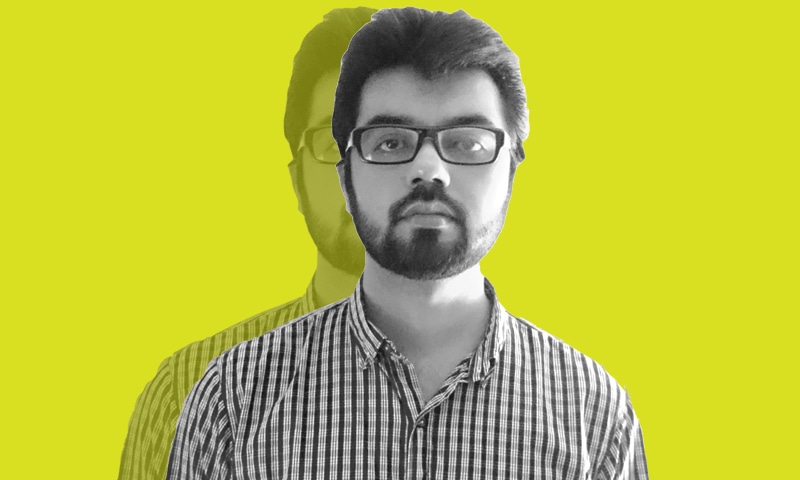
CEO, Arey Wah
1 These types of budget cuts will definitely have an impact on the overall operations of the traditional agencies. It will be harder to invest in quality resources and this will result in mediocre work just because of cost considerations.
2 Our business model is different from the traditional agencies and we believe in creative solutions and having a dialogue with our clients to enlighten them about the difference between effective and cost-effective advertising.
3 It is a positive development but it depends on what sort of work they are churning out. If it is creative and effective, then they will sustain themselves; otherwise just being cost-effective will take them nowhere.
Zohare Ali Shariff

CEO, Asiatic Public Relations Network
1 Agencies must adjust to a changing situation and focus on optimising outcomes rather than output. The increasing involvement of procurement is problematic as they tend to go for the lowest quotes, invariably resulting in goals not being achieved.
2 Budget squeezes mean a re-evaluation of campaign priorities, targets, messaging and the communication channels used, in order to get the most bang for your buck.
3 We welcome collaboration with non-traditional creative agencies provided they understand that the message is more important than creativity. And if the message can be conveyed in an original, appealing and creative way, everyone is a winner!
Ahsan Sheikh

CEO, Kinetic
1 Budgets have always been limited, but brand teams have always worked with agencies to generate value. However, procurement is now also engaged in supporting brand teams in enhancing productivity. Regardless of this, delivering value (and not just creativity) is also a key responsibility of the agency.
2 We have developed processes and systems to ensure transparency, consistency and internal accountability. Technology, more specifically data management, and developing a variety of sources are key to generating value for our clients.
3 As is the case across the service industry in Pakistan, we lack standards and professional certifications for service providers. While a one-off creative solution can come from the new non-traditional agencies, it is difficult to rely on them as they lack an in-depth understanding of marketing and brand essence.
Mansoor Zaidi

MD, S.V. Advertising
1 It is difficult to keep the same level of service, although in our case working hours have increased without compromising the quality of our service.
2 Since budgets have shrunk, we are not hiring; instead, we call people on a campaign basis.
3 Although this trend has been gaining momentum in the last few years, clients have understood that it costs more and often causes deviation from the brief.
Agha Zohaib

MD, Mindshare Pakistan
1 It doesn’t stand true for all clients. Clients are evaluating agencies through a multidimensional view. This said, overall ROI is at the centre of their decision-making.
2 We have embedded ourselves in our client’s ecosystem and understood their challenges in a deeper way. We have added several new services, upskilled our talent and subsequently upscaled our offer – making us future-proof.
3 There should always be a level playing field for everyone and although pedigree helps, all brands/agencies need to upscale themselves to stay relevant. This intensifies competition which generally results in quality output.




Comments (0) Closed